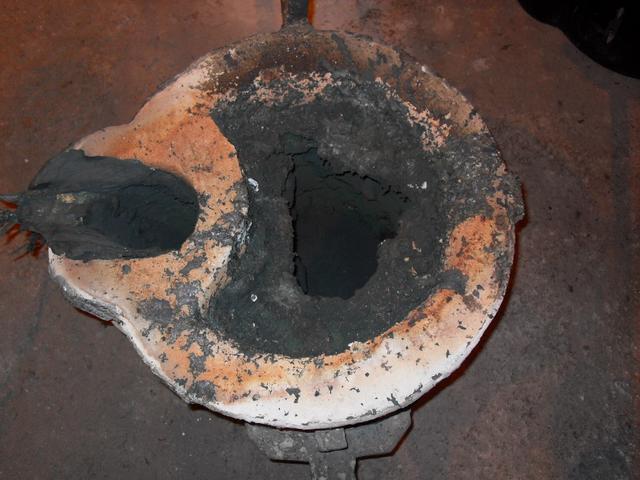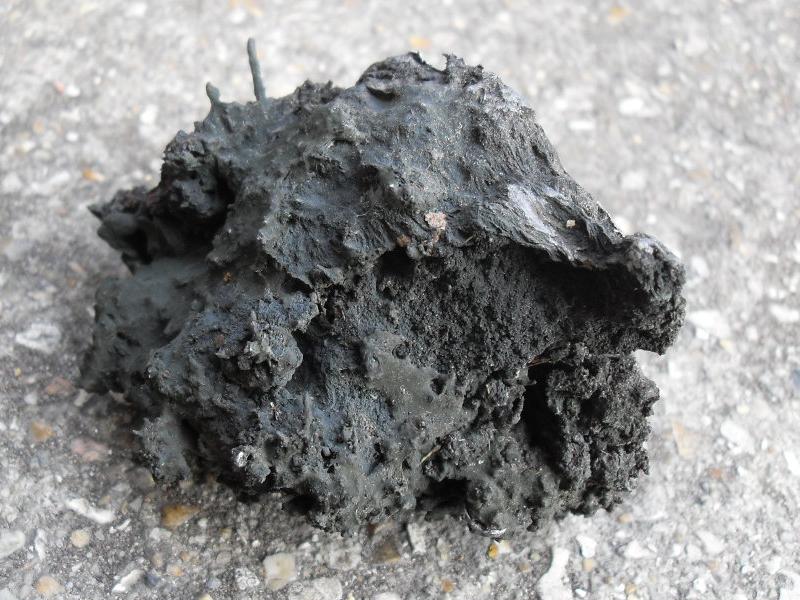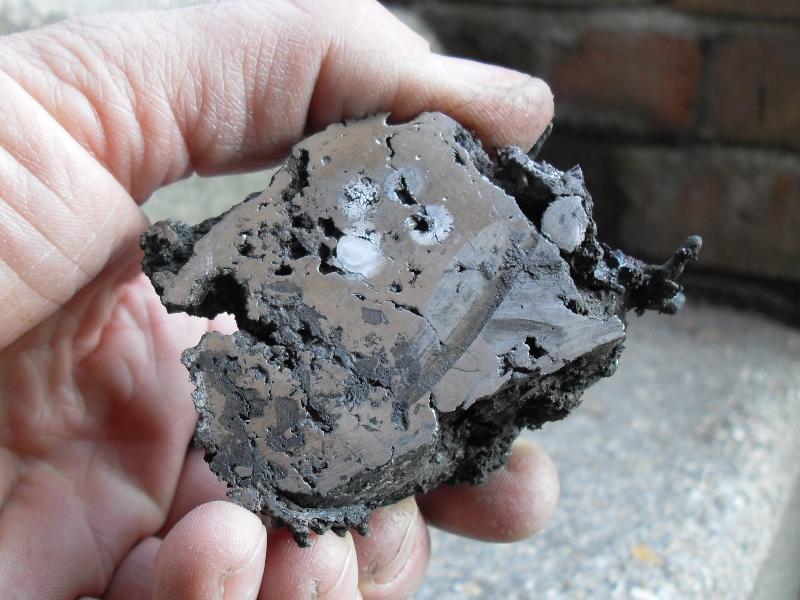
[In summary - informative only; justified current shop-floor derived methods]
The legendary Inco alloy, "IN657", which is 49.2%Ni-49.2%Cr-1.6%Nb, is the only known alloy which can resist high-temperature fuel-ash corrosion when burning heavy residual fuel-oils.
Unfortunately, legendary becomes more like notorious for its melting and pouring in foundries. It encrusts any melting furnaces and ladles it is handled in with an ever-growing seemingly impossible to remove "crust". What it looks like - see following photo of a ladle.
One economically manageable strategy is to reline a furnace - so you do not contaminate the "50-50" melt with Carbon or anything else. Then have a campaign of melting - a few heats only; probably less than 10 - before the melting furnace is so choked down with encrustation that you cannot any longer achieve a viable melt-weight.
Then you start melting "ordinary" alloys and gradually wash away the encrustation over a few heats, recovering the furnace for "normal" melting.
Meanwhile the ladle(s) are becoming choked with the same matt-black residue.

This encrustation - you can apply the chisel of a pneumatic breaker to the crust and you can run the breaker indefinitely with no effect. At most you leave a "dent" where the chisel was applied. So it is extraordinary stuff, no doubt about it.
The one thing which gives some relief - if you get the ladle landed on the floor immediately after finishing pouring and attack the searing-hot crust with a pneumatic breaker, you can often break up most of it. Which can be tipped out of the ladle when it is colder. You'll be needing a tinted visor, fireproof clothing which will smoke and you'd better have a single dedicated chisel because obviously it is softened by the heat.
The questions in my mind were - what is this hideous encrustation? What is its nature? How can this stuff both resist easy remelting and also be so tough that you cannot chisel it out of furnaces and ladles with a pneumatic breaker (pneumatic drill)? Can we know anything about it which tells us any other control strategies we could use?
After a "50-50" cast I wondered around and found this chunk of the hideous black encrustation on the floor.

The thought which came into my mind was how heavy it was - it was very heavy for its size. That it, it seemed to have an improbably high density.
I took this piece to the laboratories, weighed it, then filled a container with water and found how much volume it displaced.
Unfortunately the results no longer exist, as I had just started this new job and had not got a computer or notebook system going.
If my memory is correct, the density was about 5.6g per centimetre-cubed. Most refractories have a density of around 2.7g per cm^3. Chromite brick is reported to have a density up to about 3.15g per cm^3, but this value obtained was "infeasible" for a refractory oxide.
The laboratory technician soon revealed the explanation - by cutting the thing open with an abrasive disk and fine-grinding the cut surface.

The thing is visibly highly metallic.
A couple of spectrograph spots (seen in the photo) gave the result of the composition of the "IN657" itself. Seemingly a lot of the volume of the "crust" is the metallic alloy. Which forms a metal matrix around the oxide.
So the mystery of the hideous properties of the "IN657" crust were revealed.
The crust is largely metallic, explaining why when cold it cannot be broken up with a pneumatic hammer.
While the network of oxide makes the "crust" very difficult to remelt. The "kinetics" of melting are very slow, washing away this seemingly metal-matrix | refractory-ceramic composite.
So we find that the notorious "IN657" crust gets its properties from some unusual happy coexistence of oxide and metal, where the oxide doesn't seem to want to flux and become a liquid slag, but remains as some sort of oxide network in a metal matrix.
We do understand now why the "crust" can be broken up while very hot, while the metal-matrix is soft and can be deformed enough to cause it to fracture. Presumably those fractures oxidise immediately and help the fracturing process advance progressively.
We also understand now why the furnaces choke up with the crust and why the strategy already mentioned is as good as it gets.